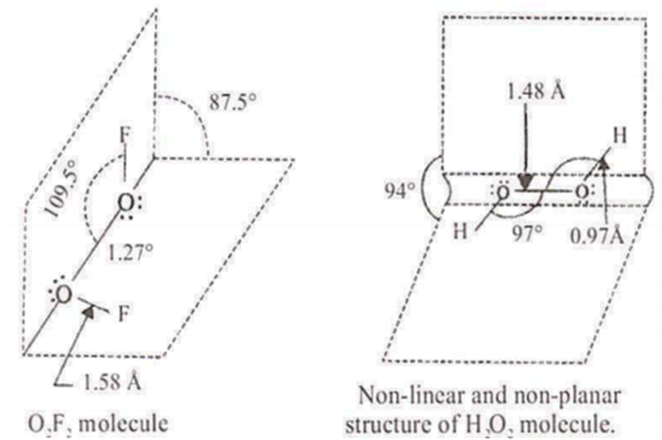 Multiple Choice Questions
Multiple Choice QuestionsDimethyl glyoxime gives a red precipitate with Ni2+, which is used for its detection. To get this precipitate readily the best pH range is
< 1
2-3
3- 4
9- 11
The statement true for is
it has a non-linear structure
it is called pseudohalogen
the formal oxidation state of nitrogen in this anion is -1
it is isoelectronic with NO2
Shape of O2F2 is similar to that of
C2F2
H2O2
H2F2
C2H2
B.
H2O2
O2F2 and H2O2, both have open book type structure.

In O2F2, one O-O bond and two O-F are lying in different plane, i.e this molecule like H2O2 has non- linear and non- planar structure.
The compound insoluble in water is
mercurous nitrate
mercuric nitrate
mercurous chloride
mercurous perchlorate.
How much energy is released when 6 moles of octane is burnt in air? Given for CO2(g) , H2O(g) and C8H18(l) respectively are - 490, -240 and +160 kJ/mol.
-6.2 kJ
-37.4 kJ
-35.5 kJ
-20.0 kJ
For the equilibrium at 1 atm and 298K.
standard free energy change is equal to zero (= 0)
free energy change is less than zero ( < 0)
standard free energy change is less than zero (< 0)
standard free energy change is greater than zero (G° > 0).
